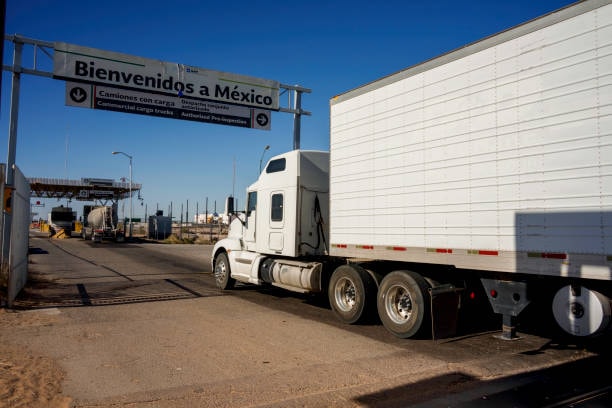
Find out all you should know about the imports in Mexico in 2025, including the regulations set by mexican customs . Get to know trade agreements, custom practices, documentation, pricing and logistic alternatives to making cross border trading successful.
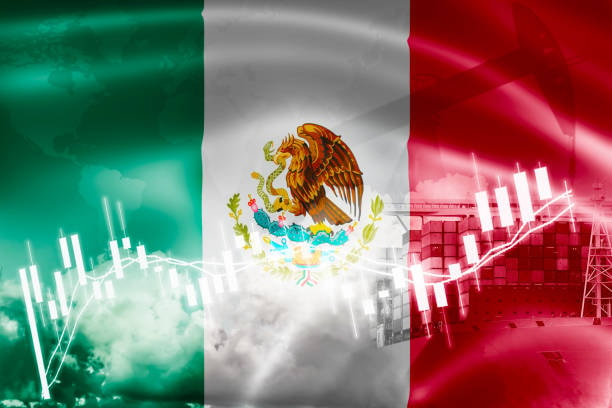
Mexico has proved to be an ideal sourcing destination in the overall business environment in the world with a number of distinct benefits that it possesses as compared to the traditional manufacturing centers mexican customs brokers. With this development in global supply chains, the case of importing products/services/inputs into the U.S.A. using Mexico is intriguing as companies attempt to diversify their supply chain operations, cut expenditures, and have sufficient reserves to cope with supply chain uncertainties. The location of the country to other large markets, solid manufacturing capacities, and good trade treaties make the country a good location to conduct a successful international business.
Over the last decades, there has been a large transformation in Mexican economy with it reporting to be one of the most sophisticated manufacturing giants today having started as an agricultural economy. Mexico is a leading exporter in most of the sectors in the world to-day in areas of auto manufacturing, electronics, textiles, food production, and even industrial equipment mexican customs broker. This diversification, accompanied by favorable labor costs and geographical location strategies have made Mexico a key actor in the world trade networks auto parts.
When it comes to businesses that are thinking of operating in Mexico through the process of importation, it is very vital to understand the complex nature of the international trade rules and regulations governing the country additional information, the intricacies involved in the logistics involved, and the cultural issues surrounding international trade processed fruit. Through service providers, such as Shenzhen Guanwutong International Freight Forwarding Co., Ltd., including a customs broker for better compliance (GWT Worldwide) offer complex services of freight forwarding and supply chain, which smoothens cross-border trade. GWT Worldwide is a professional logistics service provider focusing on the global freight forwarding, supply chain solutions, and cross-border e-commerce logistics fields, which provides vận chuyển hàng không, sea freight, China-Europe railway transportation, international express delivery, custom clearance, warehousing, and Amazon FBA shipping services to guarantee the safety, fast, and legal movement of goods across the origin/destination.
Understanding Mexico’s Strategic Trade Position and Manufacturing Capabilities
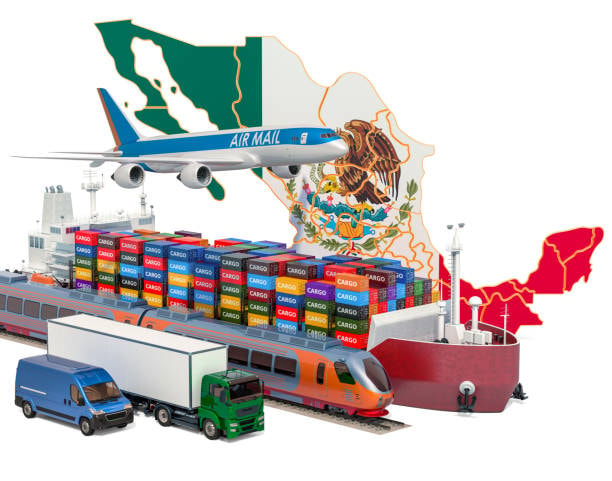
Access to large consumer markets is unprecedented because of the strategic position of Mexico, standing at the crosspoint of North and South America. The nation also has a large border with the United States and this provides landlines of transportation thus cutting down shipping time and expenses tremendously as opposed to shipping overseas. The advantage of this geographical position, along with the possibility of using both the Pacific and the Atlantic shipping routes, makes Mexico a perfect location of the company that aims to serve several regional markets at the same time.
Mexican manufacturing industry has grown over the years with investments being done on technology, infrastructure and the workers themselves. Cities like Tijuana, JuArez, Monterrey and Guadalajara have turned into complex manufacturing sites choosing different industries to produce. Especially, the automotive industry has shown an astonishing development as fully-fledged factories by leading global manufacturers are being set up almost all over the country. The investments have formed vast networks of suppliers and also created superior manufacturing capacities that favour importers in various sectors.
The manufacturing capabilities of Mexico cover not only the conventional industries, but also high tech and high value industries like aerospace, medical equipment and electronics. International investment especially by the top firms in the world using foreign direct investment has also seen the country getting the best manufacturing facilities in the world that adhere to the international standard of quality. This industrial adventure has opened an avenue that enabled importers to get quality goods at good prices with the added advantage of shorter supply chain and less complex logistics.
Mexican government has put in place several policies to encourage the export-based manufacturing and these are special economic zones and attracting foreign investments to companies that deal in international trade. The programs have led to the establishment of the current industrial infrastructure and also they have boosted the competitiveness of Mexico in the international markets. Familiarity with these capabilities and their situation on sourcing strategy is vital to companies that are contemplating about sourcing imports into Mexico.
Navigating Trade Agreements: USMCA, TPP, and Other International Frameworks
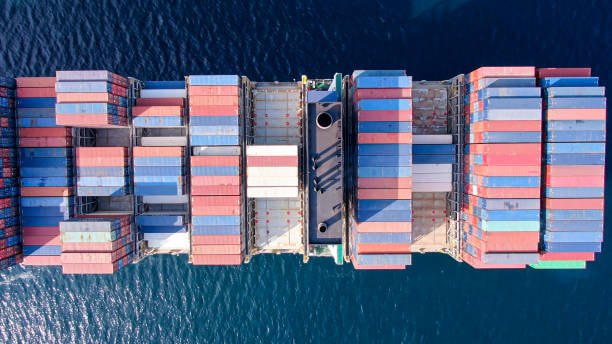
One of the most prominent trade frameworks that impacts imports driven by Mexico is the United States-Mexico-Canada Agreement (USMCA) which took the centre stage of NAFTA in the year 2020. This all-inclusive accord fixes preferential trade ties that bears the potential to generate huge savings in terms of tariffs on qualifying goods. The vital importance of studying the USMCA rules, requirements, and regulations, in particular, the rules of origin, the labor standards, and the environmental protections is to obtain the most out of the import of goods and services to the US through Mexico.
The rules of origin as contained in USMCA are very significant in establishing the possibility of products being accorded preferential treatment. These regulations give the minimum percentage of content that needs to be produced in one of the USMCA states to be eligible to lower or zero duty tariff. With such manufactured goods as the complex products, compliance can be expensive and involve the details of documentation and such aspects like supply chain analysis. The companies have to keep detailed documentation of their observance of the origin requirements in order to enjoy preferential treatment under the agreement.
In addition to USMCA, Mexico also has trade agreements with many countries in the world including the Comprehensive and Progressive Agreement for Trans-Pacific Partnership (CPTPP), the Pacific Alliance, and bilateral trade agreements. These frameworks also offer Mexican exports and exporters favorable access to various markets across the world, which might influence the prices and supply of products to the international consumers. The insights gained about these trade relationships could allow importers to know their opportunities and determine the dynamics of competition when sourcing.
Mexican Import Requirements Mexican imports will require the following documents and customs procedures, adhering to the requirements listed by authoriti : The exporter will be required to prepare an export declaration on the imports. The exporter is to declare to Mexican authorities what is being imported and the official value of the imports. The exporter will also be expected to provide a commercial invoice on commercial imports. The commercial invoice is to contain information about the imports being made, the value of the imports to be imported and exporter details.
Essential Documentation and Customs Procedures for Mexican Imports
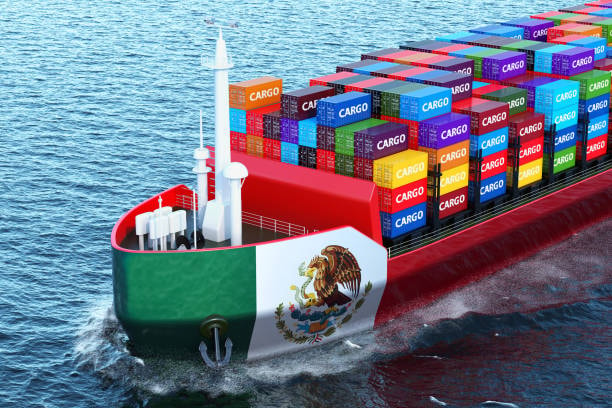
To successfully import goods into the country, documentation requirements and customs procedures have to be followed with great care when importing goods both to and out of Mexico. The genesis of any import business is dealing with proper commercial documents such as commercial invoices, packaging lists, bills of lading, etc. Such certificates should include specific details of the products, their true values, and every detail related to shipments to help the goods go through customs without any problems.
Customs valuation is done by using commercial invoices as a basic document, and such a document should contain as much information about transaction as possible such as information about a supplier and a buyer, complete product description, quantity, unit price, and values of the transaction. In Mexico, the customs authorities would demand that invoices be translated into Spanish or have certified translation. The precision in the classification of products and use of the appropriate Harmonized System (HS) codes is very important in establishing the prevailing tariffs as well as meeting the requirements in importing products.
When the trade agreement has provisions on preferential treatment to certain products upon their importation, other documentation like certificate of origin might be necessary. Such certificates should also be well filled and duly signed by relevant authorities in order to get reduced tariffs. The USMCA has self certification processes and introduces the creation of origin certificates by certificated exporters, though this has demanded an in depth knowledge of origin regulations and record keeping of the supporting documents.
Depending on its nature and use, specialized products may need some extra permits, licenses or certifications. Products that are related to agriculture, pharmaceuticals, medical equipment, and some of the manufactured goods may need to be pre-approved by the respective regulatory bodies. Learning about these needs as soon as possible in the sourcing process is critical in setting the pace to prevent delays and adherence with all the regulations that apply. To avoid these complicated requirements, one can consider using competent customs brokers and logistics providers who may guide them on the procedures to ensure effective imports.
Industry-Specific Import Opportunities and Market Analysis
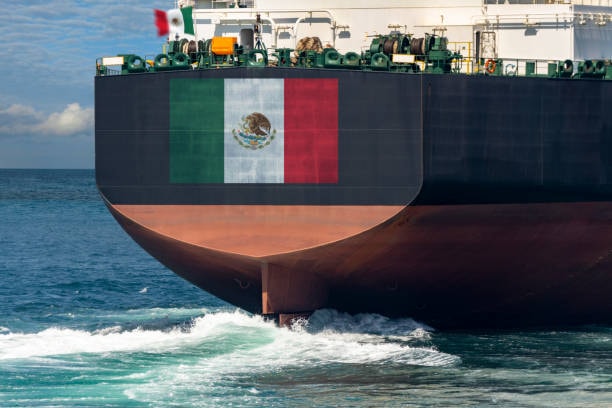
Diverse Mexican manufacturing ground means that there are opportunities in a wide variety of industry sectors with varying measures and considerations to the potential importer. The auto manufacturing business is one of the most advanced industries in Mexico and the country is also among the leading producers of automobiles in the world. The industry also provides the chance of import automobile parts, components, and finished vehicles seeds where the supplies chains are well-developed as well as being quality management frameworks put in place.
There has been a remarkable development in the electronic and technology industry where global businesses have set up production units all over the Mexican country. This has brought about chances of importation of consumer electronics, telecommunication equipment and industrial technology products. The companies who manufacture electronics in Mexico are considered to be suppliers to the global brands so that the products were made according to the international standards and specifications.
Textile and apparel sector is also a big part of the Mexican exporting industry, and to the benefits to be offered in importation of garments, fabrication of the finest, and allied products. Mexican textile industries have made huge investments in reliable equipment and modern production techniques as well as sustainability, which has brought them an edge in terms of quality and environmentally friendliness. The nearness to the large consumer markets has other advantages due to the lower lead times and transport expenses.
Food and beverages industry also holds a great potential of offering quality imports to the importers in terms of agricultural processed food products. Diverse climate and well-developed agricultural activities allow printing a large number of agricultural products, such as fruits, vegetables, drinks, foods, and processed foods in Mexico. The standards of food safety and certification program in the country allow all of the products to comply with the international standards of imported food products.
Logistics Solutions: Transportation, Warehousing, and Distribution Networks
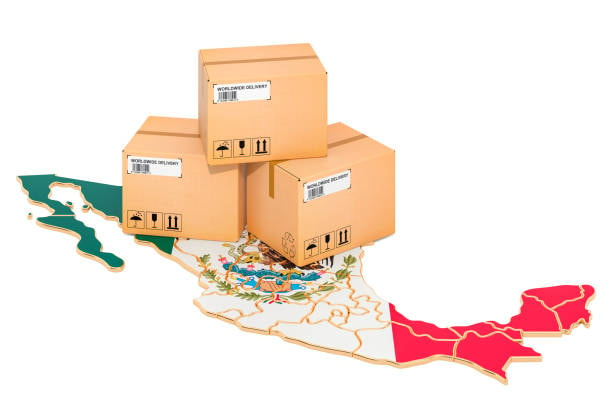
Logistics management plays a very important role in successful Mexico importing and particular attention should be paid to the mode of transportation, its route, and distribution method. The wide boundary system between the United States and Mexico offers numerous crossing places that are structured in accordance to specific kinds of cargo and transportation demands. Laredo, El Paso and Otay Mesa are major crossing points with highly developed facilities that can adequately manage a high number of commercial traffic.
Trucking is the major mode of transport of imports of Mexico as this method provides flexibility, speed, and affordability of most cargo loads. Ground transportation is possible through the behovenous highway systems that link the key Mexican manufacturing facilities to border crossings. Nevertheless, to achieve effective outcomes in trucking, it is necessary to select carriers carefully, learn how to cross the borders and collaborate with the customs brokers in order to eliminate delays and operate in accordance with the requirements.
There is an alternative in rail transport especially in those bulk cargoes and containers. North American rail system allows the existence of direct links between Mexican origins and destinations in the United States and Canada. Rail transport can be less expensive to work longer distances and heavier loads, and in some instances transit time can be longer compared with that of trucking options.
Air-freight maintains its necessity in goods having time value or those of high-value, needing quick transportation. Important Mexico airports like Mexico City, Guadalajara and Monterrey have direct access to the international destinations and advanced handling ease for different types of cargo. Air freight services tend to be costlier than surface transport, yet they offer the necessary rapidity and dependability to warrant the extra cost of suitable deliveries.
Cost Analysis and Financial Considerations for Mexican Imports
The total cost of importing the products with Mexico will need extensive analysis of all the costs involved, which include the costs of the products, transportation, duties, taxation, and logistic services. Although Mexican products might provide good unit prices, the landed cost will be dependent on so many factors which need to be analyzed critically in order to come up with a sound judgment on the issue of sourcing.
The cost of transportation also differs a lot depending on the mode of transport, distance traveled, nature of the cargo and requirements of the service. The cost of trucking is affected by the cost of fuel, availability of drivers and the length of time they spend in borders at crossings whereas the cost of vận tải biển số lượng lớn is dependent on the international situation of the shipping markets and the length of time that a vessel can wait in ports before it is cleared. Among the transportation modes, air transportation tends to be the most expensive, which is reasonable to use with time-sensitive or high-value products.
Custom duty and taxes make important cost elements and vary depending on the nature of products as well as the origin of products and eligible trade agreements. Under the USMCA, products that can receive preferential treatment could have decreased or completely waived tariffs, which translates to significant savings. Nevertheless, to enjoy these benefits, rules of origin as well as adequate documentation have to be adhered to.
Other expenses are cost of custom clearance, warehousing expenses, insurance and other service expenses. These costs may be optimised through effective routing, consolidated shipment and simplified customs trips, which professional logistics providers are able to facilitate. Active currency exchange rates fluctuations may also have a huge effect on overall costs, so, additional attention should be paid when the transaction is higher or recurring and one has to carefully select the strategy of hedging.
Regulatory Compliance and Quality Assurance Standards
General regulatory compliance is an essential part of importation of any product, especially when importing into Mexico with multiple federal, state, and local regulations, which may vary depending on the type of product being imported and its purpose. The U.S. Customs and Border Protection (CBP) implements many rules meant to keep an individual safe, healthy, and safe, and it is the duty of an importer to know, verify, and to abide by all the required rules.
The level of product safety is industry specific and by type of the product, and the agencies governing different types of products include Federal Communications Commission (FCC), Food and Drug Administration (FDA), and Consumer Product Safety Commission (CPSC). Mexican companies that export their products to other countries usually have the quality management systems and certification to meet the standards in effect, and therefore importers need to do checks and ensure proper record where needed.
Supplier qualification procedures, pre-shipment inspection and continual monitoring ought to be included in quality assurance programs to ensure he or she maintains the quality of the products. Quite several importers adopt a system of vendor management where the performance of the suppliers, quality standards and compliance statuses are monitored. Periodic audits and evaluation can be used to provide prior alerts to reflect prospective problems that might have detrimental effects on the quality of products or regulatory compliance.
Another consideration worth mentioning, especially as in the case of branded products or proprietary technologies, is the protection of the intellectual property. Mexico has intensified the existing laws of property intellectual and the implementation processes, the importers to protect their interests should adopt proper measures of securing their interests by enforcing suitable mechanisms.
Risk Management Strategies for Cross-Border Trade
There are different kinds of risks associated with the importation of products in Mexico which need to be managed proactively so as to safeguard the business interests and continuity of the operations. Although the political and economic risks tend to be low in Mexico it is possible to influence business operation due to changes in policy, exchange rates or another economic imbalance. These risks could be addressed by diversifying supplier networks and ensuring that there is flexibility in supply chain engagements.
The risks regarding supply chain are supplier reliability, quality, transportation problems, and natural disaster. These issues can be resolved by building rapport with the various suppliers, exercising quality control measures and having the right inventory levels. Communicating with the suppliers and other logistics offerers regularly allows anticipating and eliminating arising issues at an early stage.
Financial risks include the currency exchange fluctuation, risks of missing payment and variations in costs or prices. These exposures can be managed by using proper financial tools like the use of letters of credit, currency hedging and payment of terms. The risk management tools and skills (which are available when working with experienced financial institutions and trade finance experts) are provided.
Security risks have emerged to be too significant in the international trade and business conduct and there is need to consider adherence to different security Schemes and campaigns. The Customs-Trade Partnership Against Terrorism (C-TPAT) program has its advantages to those importers who are qualified and are obliged to incorporate supply chain security measures into practice.
Future Trends and Opportunities in Mexico-US Trade Relations
The future of Mexican imports seems even brighter since the trends of conducting trade across nations are still shifting and companies are finding ways of making their supply chain stronger. The insights made through nearshoring trends and the need to seek shortened supply chains and lower reliance on long-supplied distances have become possible thanks to the recent global disruption. The fact that Mexico is located close to the key North American markets places it in a position to gain a lot out of such trends.
The technological progress is still reshaping the manufacturing capabilities of Mexico as more and more of technology is being adopted in the form of automation, digitalization, and Industry 4.0 technology. Such innovations have been improving the level of productivity, quality and competitiveness in different sectors and provides new opportunities to importers who seek the high level of manufacturing capabilities.
Municipal investments, such as transport systems, port and telecommunications are enhancing the logistics performance of Mexico and have lowered the transaction costs. The efforts by the government to build industrial parks and special economic zones as well as enhancing trade facilitation are also bigger boosters to the sourcing activity in the country.
The supply chain decisions are reshaping green and sustainable thinking. The concern by Mexico on the environmental protection and sustainable development offers an opportunity to importers that wish to have green responsible suppliers. To accommodate the rise in demand of environmentally friendly products, many Mexican manufacturers are spending money on clean technologies and sustainable practices.
Phần kết luận
Mexican goods imports are also full of potentials to any company that wants to streamline its supply chain, lower cost, and enjoy the availability of top-quality products whose manufacturing base is strategically situated. This is compounded by competitive manufacturing facilities, advantageous trading partnership arrangements, easy access to major markets, and the developing infrastructure that offers strong incentives to the businesses dealing in cross-border trade. The key to success of importation in Mexico is extensive knowledge of the trade regulations, documentation standards, logistic considerations, and risk management policies.


Thank you for reading!
Have questions, corrections, or better ideas? We’d love to hear from you!
We value every piece of feedback and promise to reply within 24 hours. Let's make this guide better together!
Note: Spam comments will not be published.